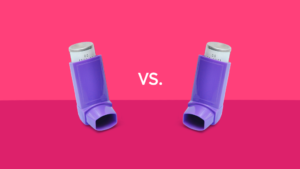What Is the Monthly Cost of Mounjaro Without Insurance?
HOME | DIABETES EDUCATION | HOW MUCH DOES MOUNJARO COST PER MONTH WITHOUT INSURANCE?
The cost of Mounjaro without insurance can range from $900 to $1,400 per month. That’s not all yet, you can save up to 90% if you shop with us at Polarbearmeds.com.
Key Takeaways
- Mounjaro’s average monthly cost without insurance is approximately $1,274 for a 15mg maintenance dose.
- Buying Mounjaro from Canadian online pharmacies could save 30% to 70% off the US price.
- Financial assistance is available through the Mounjaro Savings Card program and The Lilly Answers Center.
- Medicare and Medicaid patients may not qualify for certain savings programs, but Medicaid may cover Mounjaro.
Mounjaro’s Monthly Cost Analysis; How Much Does Mounjaro Cost Without Insurance
Mounjaro’s monthly cost without insurance is approximately $1,274 for the 15 mg maintenance dose. Patients with commercial insurance may qualify for the Mounjaro Savings Card program to help reduce this cost.
Those without commercial insurance can seek assistance through The Lilly Answers Center. Unfortunately, Medicaid and Medicare patients are not eligible for the savings card. It’s advisable to consult healthcare providers for specific cost details and other potential assistance options.
Acquiring Mounjaro From Canada; Save on Mounjaro
When buying Mounjaro, consider purchasing from Canada for savings. You can save 30% to 70% off the US price. To save, get a valid prescription and:
- Look for reputable Canadian online pharmacies.
- Compare Mounjaro prices.
- Ensure the chosen pharmacy is licensed and regulated.
Mounjaro Pen Usage Guide
Understanding the correct usage of the Mounjaro pen is crucial for managing type 2 diabetes and weight. The cost of Mounjaro without insurance coverage can be substantial, ranging from $900 to $1,400 per month.
The average monthly cost of Mounjaro is approximately $1,274, but this can vary based on the source and additional services utilized. Commercially insured patients may be eligible for the Mounjaro savings card program, potentially reducing the out-of-pocket cost.
However, coverage for Mounjaro varies, and individuals on Medicaid, Medicare, or other assistance programs may not qualify for the savings card.
Recommended Mounjaro Dosage
Understanding the recommended Mounjaro dosage is essential for effective treatment and financial planning. The average monthly cost for the 15mg maintenance dose is around $1,274 without insurance. Patients can seek financial assistance through programs such as:
- The Mounjaro Savings Card program for commercially insured patients
- Assistance from The Lilly Answers Center for those without commercial insurance
- Medicaid coverage for Mounjaro (often not eligible for the savings program)
Discuss Mounjaro cost details with your healthcare provider and inquire about available assistance programs to navigate costs and ensure proper treatment.
Case of Missed Dose
Promptly address a missed dose of Mounjaro to maintain blood sugar control effectively. Administer the missed dose as soon as possible if at least three days remain until the next scheduled dose. If the next dose is due within three days, skip the missed dose and resume the regular dosing.
Do not double the dose to compensate for a missed one. Consulting a healthcare provider for guidance on managing missed doses is crucial for optimal treatment outcomes and effective blood sugar control with Mounjaro.
Mounjaro’s Drug Interactions
Mounjaro’s potential drug interactions include:
- Insulin, sulfonylureas, and glinides: may lead to hypoglycemia, requiring careful monitoring and possible dose adjustments.
- Birth control pills: Mounjaro can reduce their effectiveness, necessitating alternative contraception methods.
- Consulting a healthcare provider before starting Mounjaro is crucial to address these interactions.
Alternatives to Mounjaro Prescription
Consider Ozempic as an alternative to Mounjaro for type 2 diabetes and weight management. Ozempic, a GLP-1 receptor agonist, offers similar effects with a slightly lower average monthly out-of-pocket cost compared to Mounjaro.
While Mounjaro, a dual GIP and GLP-1 receptor agonist, may result in greater weight loss, it comes with a higher cost without insurance, averaging $1,100 per month versus Ozempic’s around $1,000. Both medications can assist in weight management, although neither is FDA-approved specifically for weight loss.
FDA approves the active ingredient in Mounjaro to help people with obesity lose weight, named Zepbound. Studies suggest Zepbound can help people lose weight with diet and exercise. The U.S. Food and Drug Administration approved the drug Zepbound to treat obesity on Wednesday.
Consultation with a healthcare provider is crucial to determine the most suitable option based on individual needs.
Mounjaro Vs Ozempic Comparison
When comparing Mounjaro and Ozempic, it is evident that:
- Mounjaro costs around $1,100 monthly out-of-pocket, while Ozempic costs about $1,000.
- Mounjaro leads with an average 25 lbs weight loss, while Ozempic shows a 7% weight loss.
- Mounjaro is known for its weight management benefits, although neither medication has FDA approval specifically for weight loss.
- Mounjaro is a dual GLP-1/GIP receptor agonist, while Ozempic targets only GLP-1 receptors.
- The average wholesale cost for Mounjaro is higher than Ozempic, highlighting the need for careful cost-benefit analysis.
Lifestyle Changes for Success
Success with weight-loss medications like Mounjaro hinges on lifestyle changes such as diet and exercise modifications. Counselling from healthcare providers or participation in structured weight loss programs can boost the drug’s effectiveness.
Support systems are crucial for maintaining healthy habits while on medication. Individual factors, discussed with a healthcare provider, determine the best weight-loss medication, like Mounjaro or Ozempic.
Incorporating these lifestyle changes can maximize Mounjaro’s benefits, even considering its cost without insurance.
Understanding Mounjaro’s Side Effects
Mounjaro’s common side effects include nausea, pancreatitis, severe stomach issues, thyroid cancer risks, neck lumps, hoarseness, difficulties in swallowing or breathing, vision changes, and gallbladder issues.
All persistent or concerning side effects should be reported to a healthcare provider for proper evaluation.
FDA Approval Status
Mounjaro received FDA approval in May 2022 for treating type 2 diabetes. The medication helps manage blood sugar levels alongside diet and exercise. Without insurance, Mounjaro costs between $900 to $1,400 per month, depending on the dosage and source.
While FDA approval doesn’t explicitly include weight management, regulating blood sugar can indirectly impact weight. Consulting a healthcare provider is essential for individuals with type 2 diabetes considering Mounjaro to understand potential costs and benefits.
Many insurance plans cover Mounjaro, reducing out-of-pocket expenses significantly.
Does Insurance Cover Mounjaro? Mounjaro Patient Assistance Program
Insurance companies typically cover Mounjaro, making it more accessible for many insured patients. For those without insurance, the Mounjaro Patient Assistance Program offers support:
- The Mounjaro Savings Card program lowers out-of-pocket costs for commercially insured patients.
- The Lilly Answers Center provides cost-saving options for uninsured patients.
- Patients on Medicaid or Medicare may have alternative assistance options if not eligible for the Savings Card program.
Frequently Asked Questions
Is Trulicity the Same as Mounjaro?
Trulicity and Mounjaro differ in FDA approvals, starting dosages, and intended use, despite both targeting GLP-1 receptors to regulate blood glucose levels. Consult with a healthcare provider for more information.
Is Taking Mounjaro Safe?
Mounjaro use carries potential risks, including thyroid tumours and pancreatitis. Its safety depends on individual health history and monitoring for side effects. A healthcare professional should assess its suitability for each patient’s specific circumstances.
Is There a Tirzepatide Pill?
Tirzepatide, marketed as Mounjaro, is not available in pill form. It is administered as a once-weekly injection for type 2 diabetes and weight management.
Which Company Produces Mounjaro?
Novo Nordisk produces Mounjaro, a global healthcare company based in Denmark that specializes in developing innovative treatments for chronic conditions such as diabetes and obesity, including GLP-1 receptor agonists like Mounjaro.



